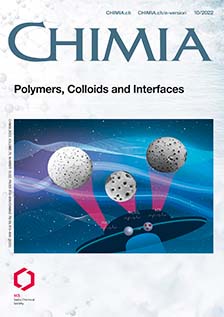Photocycloadditions for the Design of Reversible Photopolymerizations
DOI:
https://doi.org/10.2533/chimia.2022.816PMID:
38069693Keywords:
Photocycloaddition, Photocycloreversion, Reversible photopolymerization, Polymer materialsAbstract
The quest for circular designs and ways to reuse polymer materials demands further advances in the development of reversible chemistries. Stimuli-responsive systems incorporated into polymer materials that enable the formation and cleavage of covalent bonds, hold great potential to reversibly decompose materials into their original building blocks. [2π+2π] photocycloadditions, for which the addition and reversion mechanism can be triggered by disparate wavelengths, stand as an attractive platform for triggering such controlled and reversible photoligation towards achieving renewable polymer materials. This perspective highlights the potential of this type of photochemistry to incorporate solid polymer materials and generate reversible polymerizations. The design of effective photoresponsive materials with specific functions requires the consideration of a number of parameters. Following a bottom-up approach – from molecular chemistry to macromolecular functionality – this perspective provides a recipe of the key aspects to consider in the design of such advanced renewable materials. Furthermore, examples of the state of the art in the field are highlighted and an overview of the fundamental challenges that remain is provided. Finally, an outlook on the next frontiers to cross is proposed.
Funding data
-
Deutsche Forschungsgemeinschaft
Grant numbers EXC-2193/1 - 390951807
Downloads
Published
Issue
Section
License
Copyright (c) 2022 Celine Calvino

This work is licensed under a Creative Commons Attribution 4.0 International License.







